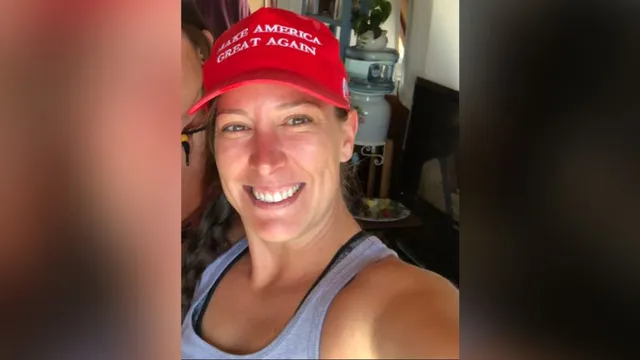
Trump administration agrees to pay $5 million for Ashli Babbitt's death
2025-05-20 15:39- Ashli Babbitt was fatally shot by Capitol Police while breaching the Capitol during the January 6 riot.
- The settlement resolves a $30 million lawsuit filed by her family after investigations cleared the officer of wrongdoing.
- This settlement raises concerns among law enforcement about its implications for police conduct in similar situations.
Express your sentiment!
Insights
In the United States, the Trump administration has reached a settlement of almost $5 million with the family of Ashli Babbitt, following her fatal shooting during the January 6, 2021 Capitol Riot. Babbitt was part of a mob that stormed the Capitol, attempting to disrupt the certification of Joe Biden's presidential victory. The lawsuit, initially filed for $30 million, alleged negligence by the U.S. Capitol Police officer who shot Babbitt, claiming that she posed no threat at the time of the incident. The settlement, which was announced after both parties confirmed it during a court hearing, does not require the Justice Department to admit any wrongdoing or change its earlier determination that the officer acted in self-defense. In 2021, investigations by the Department of Justice and the Capitol Police cleared the officer, stating that his actions were justified, as he believed Babbitt represented a real danger to the safety of members of Congress. The settlement marked a significant resolution to a case that had drawn national attention and controversy. Capitol Police Chief Tom Manger publicly voiced his disappointment about the settlement, arguing that it undermines the department’s position concerning law enforcement's responsibility during violent confrontations. Following the shooting, Babbitt’s family claimed that her unarmed status and lack of threat contradicted the officer's decision to open fire. Manger's assertion reflects a broader frustration within law enforcement regarding the implications this settlement could have for police operations nationwide. The incident that led to this legal battle occurred amid widespread chaos, as rioters attempted to overturn the election results, and several other individuals were injured during the event. As part of his response to the Capitol Riot, former President Donald Trump had previously pardoned numerous individuals involved, further complicating the public and judicial scrutiny surrounding the events of January 6. This case illustrates the ongoing tension in understanding law enforcement actions during such crises and the implications for policy and reform efforts in the future.
Contexts
The impact of the Ashli Babbitt case on policing in America has sparked significant discussions regarding law enforcement practices, accountability, and public trust. Ashli Babbitt, a pro-Trump rioter, was shot and killed on January 6, 2021, while attempting to breach the Speaker's Lobby during the Capitol insurrection. The incident raised immediate questions about the use of force by police officers, particularly in high-stress situations where public safety is at stake. The subsequent investigations into her death, including the decision by the Department of Justice not to pursue federal charges against the officer involved, have highlighted the complexities surrounding policing in politically charged environments. As a result, law enforcement agencies have been compelled to reassess their protocols in critical incident response to better align with community expectations and the rule of law. In the wake of the Babbitt shooting, various policing organizations have undertaken initiatives aimed at reviewing and revising use-of-force policies. These revisions often emphasize de-escalation techniques and the importance of situational assessment before resorting to lethal force. This case has served to illustrate the fine line that police officers must walk when responding to civil disorder, especially when crowds become agitated or aggressive. The Babbitt incident, alongside the larger context of national discourse on police violence and accountability, has prompted discussions on the need for ongoing training in tactical responses, particularly for those officers involved in crowd control and political events. Moreover, the media coverage of the Ashli Babbitt case and the broader Capitol riot has influenced public perceptions of law enforcement. Many community members have expressed concerns regarding perceived favoritism towards certain groups during protests and uprisings. This inconsistency has aggravated existing tensions between law enforcement and communities of color, as parallel scenarios—where nonviolent protests against racial injustice were met with force—are contrasted with the response to the Capitol rioters. Police leadership faces the challenge of restoring public trust, demanding transparency in operations, including clearly defined accountability measures and community engagement strategies to mitigate distrust. Overall, the Ashli Babbitt case acts as a critical retracing point for policing in America, driving discussions regarding equipment, training, and methods. Law enforcement agencies must navigate the intricacies of maintaining public order while ensuring they do not escalate tensions unnecessarily. Ongoing dialogue about police reform, community safety, and operational accountability will determine whether lessons learned from incidents like the Babbitt shooting translate into meaningful change or reinforce existing divides. The outcome of these discussions not only affects police policy but ultimately shapes the future of policing and community relations in America.